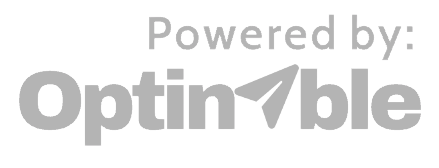
By Maureen Ryan
Global Solutions Director
Stores
“Planning without action is futile, action without planning is fatal.”
I recently came across this saying by Cornelius Fichtner, PMP, CSM. While it may be a bit dramatic in tone (we don’t want anything to be fatal after all), it does speak to the criticality of building a plan that you can execute effectively.
Lately, I have been talking a lot about how much retailers can stand to gain by improving their approach to markdown planning, but with an emphasis on the execution piece (training associates, labor planning, display, and even last-mile pricing execution).
Here is where your store systems—including everything from point of sale (POS) to IoT to human resources to your workforce to store operations—have a big impact on executing markdown plans.
Markdowns are Top of Mind for Retailers Now
Markdowns are top-of-mind for retail executives right now. In fact, McKinsey recently surveyed senior merchants about their strategic priorities. Among the six key imperatives cited by merchant leaders was the need to implement an analytics-driven approach for markdown decisions.
Instinctively for retailers though, a lot of the focus for making improvements within markdown strategies immediately goes to the sales, inventory, and margin goals that can be achieved through better planning and optimization: How can we incorporate data and analytics, and intelligent, AI-driven recommendations?
You can learn more in our recent guide, “The Complete Retail Markdown Planning Guide: 8 Ways to Boost Performance.”
Markdown Plans Should Account for Store Ops and Systems
It’s important to remember, however, that the recommendations from a markdown system will only be as good as the model on which they are built. And, yes, your model must include data about store-level inventory, actual sell-through, forecasted sell-through, price sensitivity, and your desired exit dates.
But, that model must also take customer touchpoints into consideration. Put simply, can you actually implement the strategies recommended by your markdown planning and markdown optimization systems across all your stores? That’s why the store—including store operations and store systems—is a critical part of your markdown strategy.
5 Store-Level Considerations for Markdown Excellence
Now that we’ve established how important your store systems are, here are 5 considerations that impact your markdown model and organization, in order to achieve the next level of excellence:
- Store labor. Markdown decisions are made at headquarters. But HQ needs to alert stores that markdowns are coming so they can be prepared. Stores must have sufficient labor in place to implement those markdowns—including repricing and relocating merchandise, placing and updating signage, etc.—and all in a timely and accurate fashion. Also, keep in mind that when word of your markdowns results in increased store traffic, this could require additional staffing.
- Store education. Store management and associates need to be educated on markdowns and how they will be applied. Customers will come to the store and expect managers and associates to be fully educated. For example, can markdowns be combined with other promotions? What’s the expiration date of the markdown? Will you hold marked-down merchandise for me?
Many times, customers don’t understand how promotions are being combined with markdowns, if at all. For example, a store associate may be trying to save the customer more money by offering a different discount from what’s on the shelf, but it results in shopper frustration when he or she doesn’t understand why the markdown is being changed to a different or better combination.
That’s why the way markdowns are presented and supplied needs to make sense to associates and also be easily explainable to customers—every single time. - Cost and time constraints. Assigning labor to execute markdowns as well as training associates to implement them, carries extra costs. There are also constraints on labor and how many markdowns can be implemented within a certain timeframe. These costs and constraints should be fed into your markdown model so that the strategy your markdown planning and markdown optimization system recommends accounts for these costs, and is actually implementable in the real world.
- Brand perception. If there are too many discounted items across too many shelves, aisles, racks, or sections of floor space, you may be conveying an unintentional perception to customers that could harm your brand perception, and your ability to make future full-price sales (especially for apparel/footwear/accessories retailers). Your markdown model should help manage rules around what proportion of merchandise across, and within departments, can be set at markdown during a given period.
- Pricing logic at the POS. If you’re like many retailers, you may have pricing that comes in from multiple systems, with promotions and markdowns that cover the same turf. Your POS needs to be the arbiter, stacking discounts and moderating between best-deal pricing for customers and margin preservation for the chain, while also ensuring that the right stack discounts are getting the customer the best price, while following rules for preserving margin.
Develop Retail Markdown Strategies for the Real World
When it comes to improving your markdown capabilities and executing them to achieve impactful business benefits, your strategies need to make sense for the real world. This means your systems and people need to be able to effectively implement them at the store level.
The challenge to all these moving parts is being able to orchestrate everything across people, processes, and technology—from HQ down to stores and other customer touchpoints. That’s why it’s crucial to work with a partner who understands retail and what it takes to implement strategies for the real world.
At Logic, we help our retailer clients build and execute those real-world strategies. And that’s not just within the Stores practice I lead, but across each of Logic’s other practices, whether it be in Data and analytics, Digital, Cloud, or Merchandising.
As the Global Solutions Director for Logic’s Stores consulting, Maureen works with clients to develop store and omnichannel systems strategies, and then leads her teams to deliver on them. She has served as the executive sponsor for clients undergoing store systems transformation initiatives. Maureen oversees the Logic Stores consulting team, focusing on omnichannel implementations including point-of-sale (POS), customer relationship management, and order management systems (OMS). She grew her team from zero to more than 200 employees, including both onshore and offshore capabilities.





